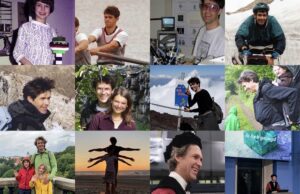In memoriam Raimond Ravelli (25-03-1968 – 30-06-2023)
It is with great sadness that we announce the passing of Raimond Ravelli. It is a shock to everyone who knew him as a very enthusiastic and energetic scientist and person.

Raimond started his PhD in the early nineties at the crystallography lab in Utrecht as a student of Henk Krabbendam and Jan Kroon. It was immediately clear that he was very bright, creative, and always full of ideas. During his PhD he worked on Laue diffraction and, via his colleague Mia Raves, he met Joel Sussman, whom he joined on many data collection trips to Brookhaven. He was fascinated by experimental crystallography and took a position as beamline scientist at ESRF in Grenoble in 1998. Many people experienced his kindness and willingness to help and his aim for perfection in data collection. At beamline ID-14-4 he assisted in collecting data for two of the three ribosome structures that were awarded the Nobel Prize in 2009.
Despite the service orientated job, he developed his own research and became an expert in radiation damage (with Martin Weik, Sean McSweeny and Elspeth Garman) and even turned this nuisance into a tool for phasing. He had a very good time in Grenoble but, after nine years, he felt that it was time to find a more permanent job and start a family. At the same time, he took up the challenge to change his field of research to Electron Microscopy. He moved back to the Netherlands in 2007 and started at the LUMC in the lab of Bram Koster. He immediately made valuable contributions to his new research field. At the LUMC he collected EM data on zebrafish and even got a mention in The Guinness World Record for the largest compound digital image of 281 gigapixels (see figure 5 in this paper). In 2014 he moved to the Maastricht MultiModal Molecular Imaging Institute (M4I) of Maastricht University where he became Associate Professor. In those days, with his usual enthusiasm, he also chaired the board of the NVK from 2011 to 2015.
The number of papers with Raimond as one of the authors and the variety of collaborators is amazing and is typical for his quick thinking and ease of adaptation. He was always focused on improving experimental techniques to get biologically relevant information. It is only last November that he held his inaugural lecture at the occasion of his appointment as full professor. His lecture “Musing on Nanobiology“ was vibrant and beautifully presented and addressed both layman and specialists in the field (the recording of his inauguration is available at https://youtu.be/Gv3pKRp5S2Y?t=667).
Mid April of this year he was diagnosed with pancreatic cancer. Chemotherapy did not slow down the progress and on June 30th Raimond passed away at the age of 55.
Raimond will be dearly missed by many colleagues and friends but most of all by his family, his wife Maaike and his children Seppe and Noé. Our thoughts are with them.
